Process comparison of hot melt adhesive film
Click:Date:2022/11/18
Hot melt adhesive film is a kind of high-grade composite material now. Hot melt adhesive film is a kind of mesh formed by melt spinning with hot melt adhesive as the base material. This kind of mesh seems simple, but it is magical. This kind of material can bond two sides quickly after high temperature pressing. Due to its strong composite ability, hot melt adhesive film has been accepted as a pressing auxiliary material by more and more people. The appearance of hot-melt adhesive film is a revolutionary change for the pressing process.
Hot melt adhesive film is a kind of film with a certain thickness made of hot melt adhesive, which is placed between the adhered materials and bonded by heating. It helps the industrial production to realize large-scale production, improve the production efficiency and save the adhesive material at the same time. Some properties of raw materials, such as rheology and film-forming properties of raw materials, must be considered when making films of hot-melt adhesives. There are also many film forming methods, such as coating method, blow molding method, tape casting method and calendering method.
Common hot melt adhesive film forming methods and their comparison
Coating method
Coating method is often used to produce the release film. The coating methods can be divided into: light roller coating, mesh coating, scraper coating, spray coating and curtain coating. According to different products, coating characteristics are different and different coating methods are used. The key characteristics of release film produced by coating method include coating uniformity, high residual adhesion, flatness and high cleanliness. The quality of coating equipment, the deployment of silicone oil, and the environment of the workshop are closely related to these characteristics.
Blow molding
The resin is melted and plasticized by the extruder, and is led vertically upward from the annular die head. After blowing, the resin is introduced into the traction roller by the herringbone plate, and then the finished product is obtained through the guide roller and coiler. In blow molding, there is a blowing process, which causes the longitudinal and transverse molecules of the product to be stretched in different degrees. The temperature resistance and heat sealing performance of the product will be greatly affected.
Tape casting
The resin is melted and plasticized by the extruder, and extruded from the die head through the slit die, so that the molten material clings to the cooling roller, and then the finished product is obtained by stripping, stretching, slitting and coiling.
Tape casting has high production efficiency and good quality stability. In the process of production, there is less waste, and it is easy to realize on-line recycling of edge and waste, and the utilization rate of materials is high.
Blow molding vs tape casting
The annular die head and multi-layer superimposed die core used in blow molding have very high requirements for machining accuracy and assembly accuracy, and are particularly difficult to control. If there is a small error in the machining and fitting accuracy, it can not be compensated by adjustment, so the thickness tolerance of the product is basically about ± 10%.
The tape casting method adopts flat die head with special retention groove in the die head to ensure the uniformity of material flow. The uniformity of die lip gap can be automatically controlled by the automatic adjustment device of die head. The control precision is very high, and the thicker film can be controlled below ± 3%.
Blow molding can produce some hot-melt adhesive film products, but the flatness and uniformity of the film are not as good as tape casting film, especially as hot-melt bonding, in the process of hot-melt bonding, the thermal shrinkage of blown film is large, which is easy to lead to poor bonding.
The film prepared by tape casting has the advantages of orderly arrangement of molecules and fast cooling speed, which is conducive to improving the transparency, glossiness and thickness uniformity of the products, and the product is soft and tough; its impact resistance, heat resistance and low temperature adaptability are better than those of blow molding.
Calendering
The resin is melted and plasticized by an extruder, extruded from the die head through a slit die, calendered and cooled by a three roller calender, and then the finished product is obtained by cooling the conveying roller and coiling device.
Calendering is superior to blow molding in all performance indexes, thickness uniformity and thermal shrinkage of products, and has great advantages in product thickness range and raw material adaptability.
But in terms of investment, calendering process is more than ten times higher than blow molding process.
Compared with tape casting method, the production line of the same scale is more complex and difficult to operate because it adopts vertical operation, and tape casting method can not produce products with thickness of more than 1.5mm.
Hot melt adhesive film is a kind of film with a certain thickness made of hot melt adhesive, which is placed between the adhered materials and bonded by heating. It helps the industrial production to realize large-scale production, improve the production efficiency and save the adhesive material at the same time. Some properties of raw materials, such as rheology and film-forming properties of raw materials, must be considered when making films of hot-melt adhesives. There are also many film forming methods, such as coating method, blow molding method, tape casting method and calendering method.
Common hot melt adhesive film forming methods and their comparison
Coating method
Coating method is often used to produce the release film. The coating methods can be divided into: light roller coating, mesh coating, scraper coating, spray coating and curtain coating. According to different products, coating characteristics are different and different coating methods are used. The key characteristics of release film produced by coating method include coating uniformity, high residual adhesion, flatness and high cleanliness. The quality of coating equipment, the deployment of silicone oil, and the environment of the workshop are closely related to these characteristics.
Blow molding
The resin is melted and plasticized by the extruder, and is led vertically upward from the annular die head. After blowing, the resin is introduced into the traction roller by the herringbone plate, and then the finished product is obtained through the guide roller and coiler. In blow molding, there is a blowing process, which causes the longitudinal and transverse molecules of the product to be stretched in different degrees. The temperature resistance and heat sealing performance of the product will be greatly affected.
Tape casting
The resin is melted and plasticized by the extruder, and extruded from the die head through the slit die, so that the molten material clings to the cooling roller, and then the finished product is obtained by stripping, stretching, slitting and coiling.
Tape casting has high production efficiency and good quality stability. In the process of production, there is less waste, and it is easy to realize on-line recycling of edge and waste, and the utilization rate of materials is high.
Blow molding vs tape casting
The annular die head and multi-layer superimposed die core used in blow molding have very high requirements for machining accuracy and assembly accuracy, and are particularly difficult to control. If there is a small error in the machining and fitting accuracy, it can not be compensated by adjustment, so the thickness tolerance of the product is basically about ± 10%.
The tape casting method adopts flat die head with special retention groove in the die head to ensure the uniformity of material flow. The uniformity of die lip gap can be automatically controlled by the automatic adjustment device of die head. The control precision is very high, and the thicker film can be controlled below ± 3%.
Blow molding can produce some hot-melt adhesive film products, but the flatness and uniformity of the film are not as good as tape casting film, especially as hot-melt bonding, in the process of hot-melt bonding, the thermal shrinkage of blown film is large, which is easy to lead to poor bonding.
The film prepared by tape casting has the advantages of orderly arrangement of molecules and fast cooling speed, which is conducive to improving the transparency, glossiness and thickness uniformity of the products, and the product is soft and tough; its impact resistance, heat resistance and low temperature adaptability are better than those of blow molding.
Calendering
The resin is melted and plasticized by an extruder, extruded from the die head through a slit die, calendered and cooled by a three roller calender, and then the finished product is obtained by cooling the conveying roller and coiling device.
Calendering is superior to blow molding in all performance indexes, thickness uniformity and thermal shrinkage of products, and has great advantages in product thickness range and raw material adaptability.
But in terms of investment, calendering process is more than ten times higher than blow molding process.
Compared with tape casting method, the production line of the same scale is more complex and difficult to operate because it adopts vertical operation, and tape casting method can not produce products with thickness of more than 1.5mm.
- Definition and characteristics of hot melt adhesive film
- Five main factors affecting hot melt adhesive film
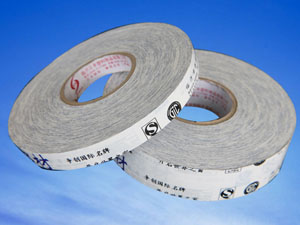
Protective Film For Aluminum Window Profile

Polymer Adhesive Film
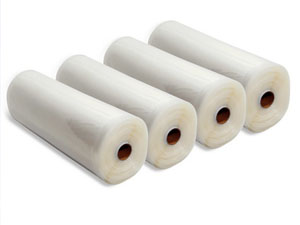
Pvc Protective Film
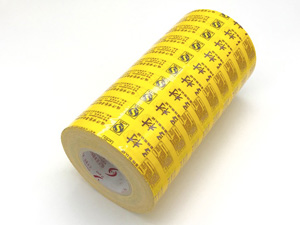
Protective Film for Stainless Steel Plate

Transparent Protective Film
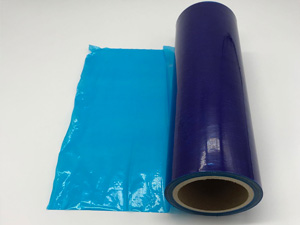
Bule Film
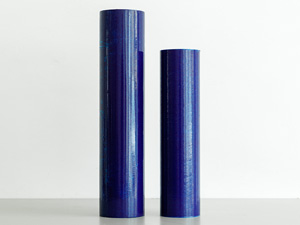
Protective Film for Glass

Self Adhesive Protective Film

Protective Film for Aluminum Composite Panel

Protective Film for Aluminum Composite Panel
Advantages and disadvantages of PVC membrane structure
What are the characteristics of PE protective film
Selection principle of protective film
Advantages of protective film
How to avoid degumming when using the protective film of aluminum plastic plate?
The characteristics and types of protective film
Five main factors affecting hot melt adhesive film
Process comparison of hot melt adhesive film
Definition and characteristics of hot melt adhesive film
Classification of PE protective film viscosit


